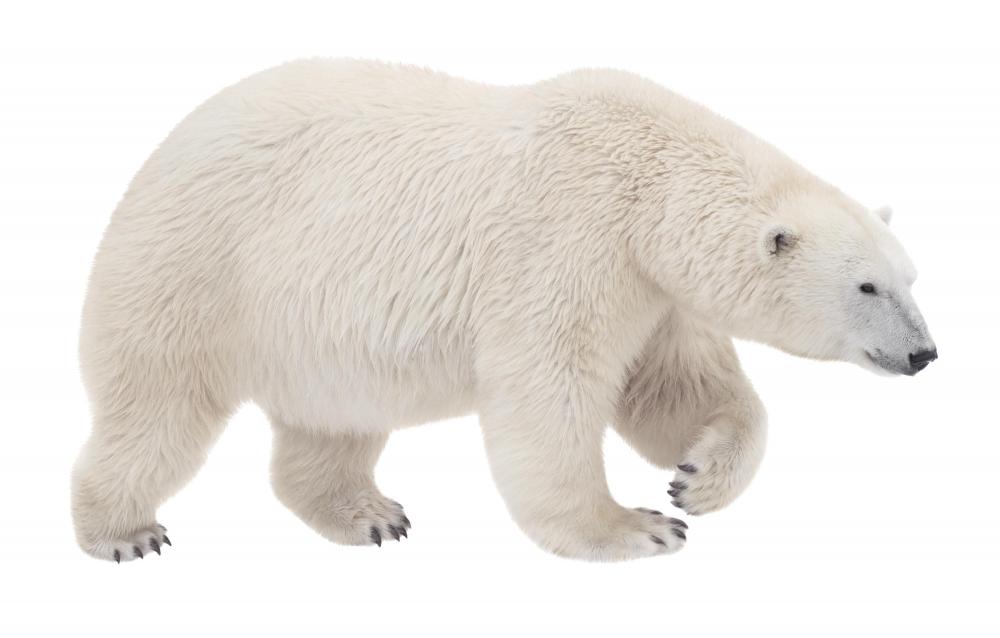At AllThingsNature, we're committed to delivering accurate, trustworthy information. Our expert-authored content is rigorously fact-checked and sourced from credible authorities. Discover how we uphold the highest standards in providing you with reliable knowledge.
What is Bergmann's Rule?
Bergmann's Rule is a theory which states that animals will tend to be larger at higher latitudes than they will be at the equator, correlating average temperatures with body size. This principle is one among a family of “ecogeographic rules,” theories posited by biologists to explain natural phenomena on the basis of ecology and geographic location. This rule is not without controversy, not least because there are some notable exceptions which would seem to disprove the rule, such as the admittedly massive African elephant.
The idea behind Bergmann's Rule is that the lower the ratio of body mass to surface area, and less heat loss an animal will experience. The larger the ratio, the more heat loss will be experienced. In regions like the Arctic, animals naturally want to reduce the amount of heat they lose, so that they do not become hypothermic and die. In equatorial regions, on the other hand, animals want to lose heat, so that they do not turn hyperthermic and suffer the related health complications.

According to Bergmann's Rule, populations of the same species of animal should appear in different sizes, depending on their latitude, and closely-related species should also demonstrate size variance which can be correlated with their natural habitat. And, as a general rule, equatorial animals are supposed to be smaller, while Arctic animals should be correspondingly larger.

There is some evidence to support Bergmann's Rule: polar bears, for example, are much larger than spectacled bears, which live closer to the equator, and a number of animals do develop size variation both within species and in closely related species which can be correlated to geographic location. This theory has also been used to explain the typically heavier body types of people from Arctic regions when compared to equatorial peoples.
However, a number of counterpoints to Bergmann's Rule can also be pointed out. Some Polynesian peoples, for example, have famously heavy body structures and a tendency to grow overweight with age, despite the fact that they live in warm climates, and some Arctic animals are quite small, while some equatorial creatures get very large. In all probability, Bergmann's Rule is only one among a large family of factors which can influence the size and development of creatures on Earth, and while it is something to be considered, it is not a hard and fast explanation for the wide variance of body types, shapes, and sizes on the Earth.
Frequently Asked Questions
What is Bergmann's Rule?
Bergmann's Rule is an ecological principle that states that within a broadly distributed taxonomic clade, populations and species of larger size are found in colder environments, and species of smaller size are found in warmer regions. This rule suggests that body mass has a direct relationship with temperature regulation, where larger bodies retain heat more efficiently in cold climates, and smaller bodies dissipate heat better in warm climates.
Who formulated Bergmann's Rule and when?
Bergmann's Rule was formulated by the German biologist Carl Bergmann in 1847. He observed the pattern in mammals and birds and proposed that it was a response to environmental temperature. His observations have since been expanded upon and studied in various species across different taxa.
Does Bergmann's Rule apply to all animals?
No, Bergmann's Rule does not apply universally to all animals. While it is observed in many endothermic (warm-blooded) animals such as birds and mammals, there are exceptions. Some species do not follow the rule due to other ecological pressures like food availability or habitat differences. Additionally, ectothermic (cold-blooded) animals often do not exhibit this pattern.
How does Bergmann's Rule relate to climate change?
Climate change may impact animal populations in ways that are consistent with Bergmann's Rule. As global temperatures rise, some researchers suggest that animal body sizes may decrease. According to a study published in the journal 'Nature Climate Change', there is evidence of shrinking body sizes in some species, which could be a response to warming temperatures and the need for more efficient heat dissipation.
Can Bergmann's Rule be observed in humans?
There is some evidence to suggest that Bergmann's Rule may apply to humans. Historical data indicates that human populations living in colder climates, such as those in Northern Europe, tend to have a larger body mass than those in warmer regions, like equatorial populations. However, cultural, nutritional, and other environmental factors also play significant roles in human body size variation.
Is Bergmann's Rule considered a law in biology?
Bergmann's Rule is not considered a strict law in biology because it has exceptions and does not apply to all species. It is more accurately described as a general pattern or principle that can provide insights into the relationship between an organism's size and its thermal environment. It is a useful concept for understanding ecological and evolutionary adaptations but is not without its limitations and critics.
AS FEATURED ON:
AS FEATURED ON:












Discussion Comments
Are there any other examples of animals that follow the rule?
Bergman's Rule sounds like just a theoretical idea. There are way too many exceptions to call it anything else. I think that perhaps the variation in size and shape of animals has to do with the migration and adaptation of species.
Also their diets and how much food was available at various times in their history may have more to do with variable size. The temperature and latitude might have something to do with the size of animals, but certainly not a big part in it.
Post your comments